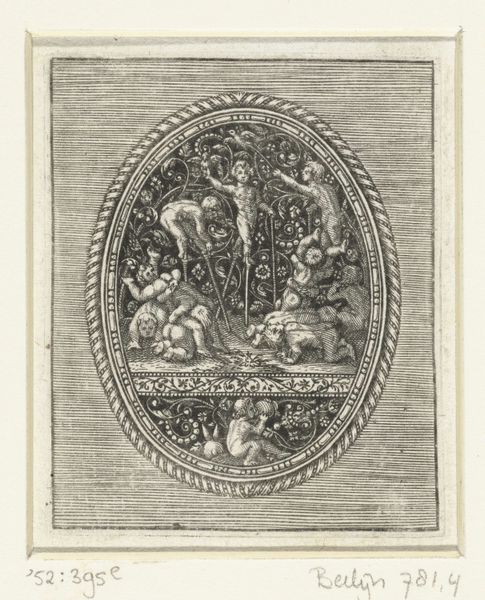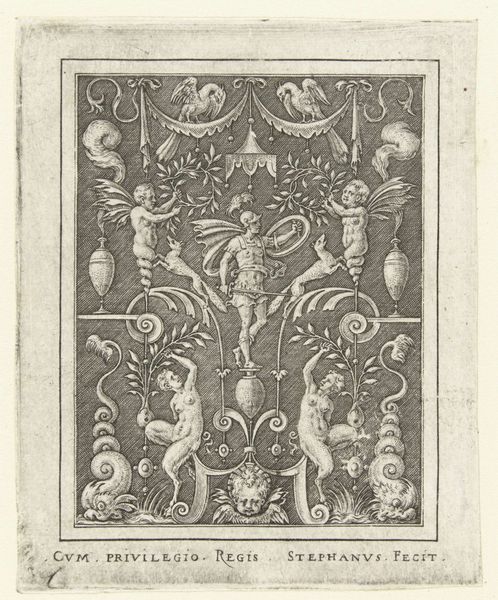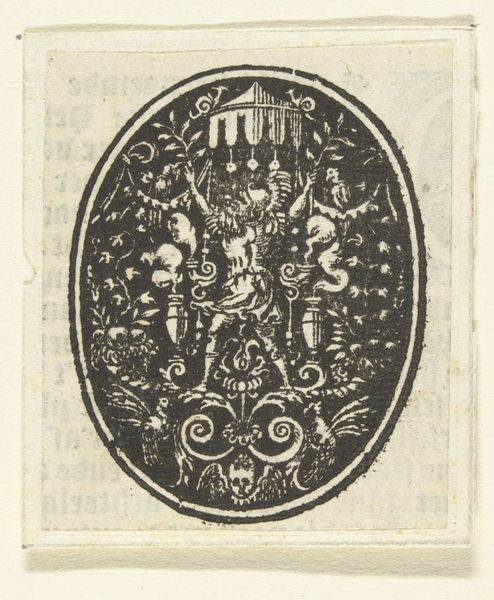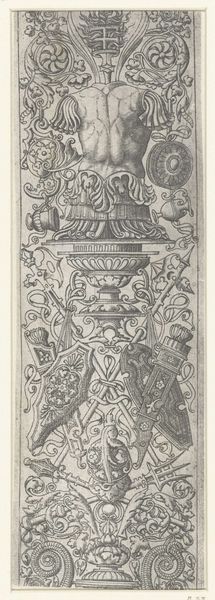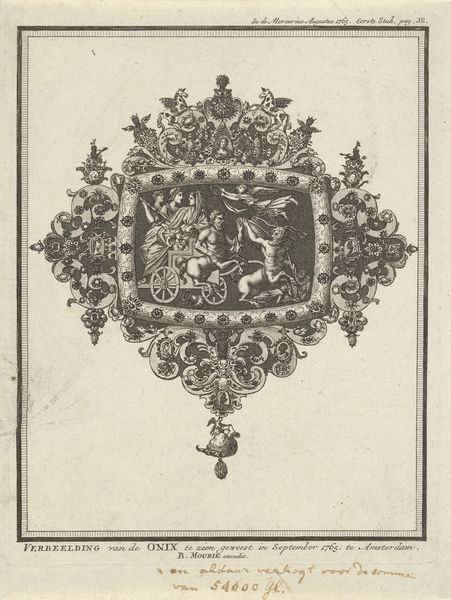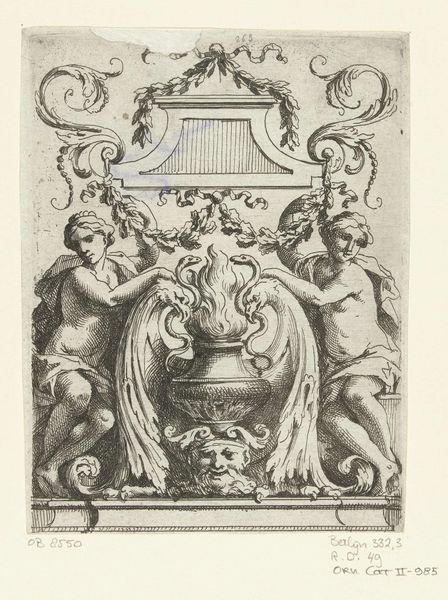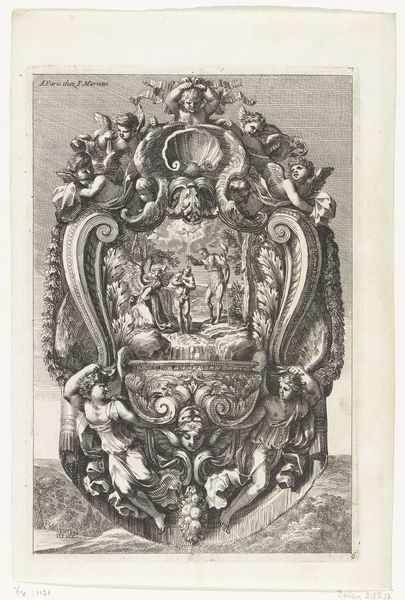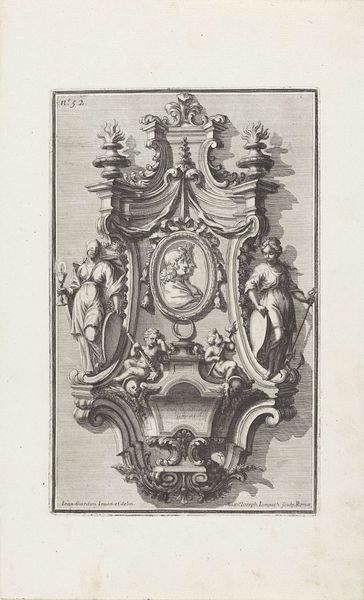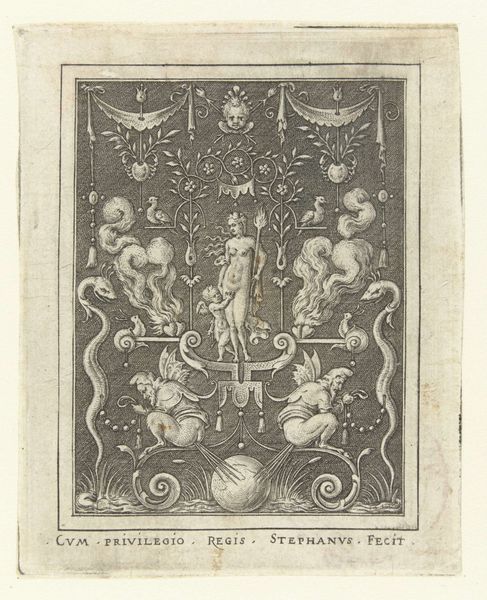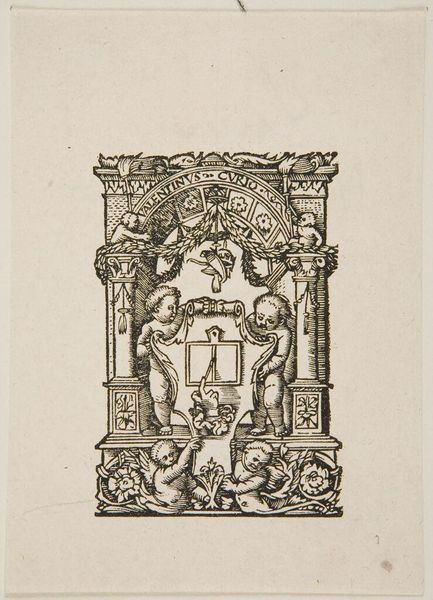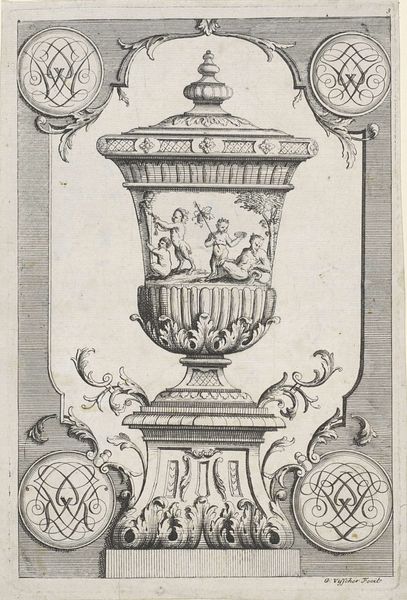
print, engraving
#
allegory
#
pen drawing
# print
#
old engraving style
#
figuration
#
11_renaissance
#
pen-ink sketch
#
pen work
#
sketchbook drawing
#
history-painting
#
engraving
Dimensions: height 82 mm, width 64 mm
Copyright: Rijks Museum: Open Domain
Editor: This etching, titled "Altar with a Burning Fire," made between 1528 and 1583 by Etienne Delaune, caught my eye. The pen work is incredible, with such fine lines creating a detailed scene. It's quite ornate, but I'm curious, what do you notice first when you look at this piece? Curator: Immediately, I'm drawn to the context of production. Delaune was working in a period where printmaking was increasingly sophisticated and disseminated widely. This engraving isn’t just an image; it's a commodity, circulated within a specific market and serving particular socio-political needs. Notice the altar. It isn't necessarily about religious piety, but a declaration through its careful ornamentation, showing off material excess of the patron. How does the engraving technique influence our understanding? Editor: I see what you mean. The precision suggests skill and thus, value, both in terms of artistic labor and perhaps, by extension, what’s being depicted? Are the figures significant in terms of who would have consumed this image? Curator: Precisely. These allegorical figures are rooted in classical imagery but are filtered through a Renaissance lens, signifying wealth, taste, and learning. What’s depicted had to appeal to consumers of such luxury goods. Consider, too, how the engraving process itself—the labor, the materials, the very act of making multiples— democratizes the image, yet its content reinforces a hierarchy. Does it democratize it truly? Editor: So, the value isn’t just in the image, but also in the means of its production and circulation. That tension between the exclusive imagery and relatively accessible format makes it much more complex. Thanks! Curator: Exactly. It’s a useful reminder to think of these objects not just as aesthetic forms, but products deeply embedded in a web of material conditions. A whole socio-economic world.
Comments
No comments
Be the first to comment and join the conversation on the ultimate creative platform.
